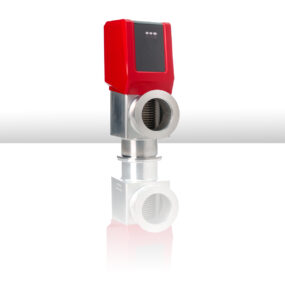New Levels of Energy Efficiency for Birmingham Women’s Hospital
A new off-site manufactured CHP (combined heat and power) boilerhouse is helping Birmingham Women’s NHS Foundation Trust to deliver on its commitment to improve energy efficiency.

Armstrong
Established in 1994, the Trust is one of only two specialising in women’s healthcare. Based in Edgbaston, adjacent to the University Hospital Birmingham, it has around 150 adult beds and 43 neonatal cots. On average it looks after 50,000 patients a year, performs approximately 3,000 operations and delivers around 7,000 babies.
Improving energy efficiency is an important objective for the Trust. Following a project feasibility study carried out by the Carbon Trust, it was identified that the introduction of an advanced technology combined heat and power (CHP) plant at the site would enable the site to reduce its energy costs and reduce overall carbon emissions by generating its own electricity.
Instead of assembling the boilerhouse from individual components on site in the traditional way, the project removed the build of the boilerhouse away from the hospital. The boilerhouse was designed by experienced engineers at Armstrong, using the latest 3D computer modelling technology. Armstrong then constructed and tested the boilerhouse at its purpose-designed factory in nearby Halesowen and delivered it to the site for final connections.
To enable movement by road, the large boilerhouse was purpose-designed and manufactured in six sections which could be connected together quickly after delivery to site. Once the site connections for the boilerhouse were complete, the CHP unit was delivered. Within one day, the roof was removed from the boilerhouse, the CHP unit was craned in, the roof was replaced and the connections made to the on-site services.
This had a number of advantages for the Trust. The risks of carrying out works on an occupied site were avoided, meaning that the Trust could safeguard safety of patients, visitors and staff more effectively. As the boilerhouse was manufactured off-site, the actual installation time needed for the project was drastically reduced, requiring a couple of days rather than several months. Traffic at the busy site was not aggravated by the arrivals and departures of contractors and deliveries of equipment during the construction phase.
The design and product selection for the boilerhouse delivered additional benefits. By using 3D computer modelling Armstrong was able to determine how best to optimise the space and reduce footprint. In order to allow the maximum amount of HVAC equipment to be installed in the minimum amount of space, and to still allow room in which engineers can carry out maintenance, Armstrong used a pipeline hanging installation method. The design of the Armstrong 4300 Series vertical inline pumps used in the plant rooms enables them to be suspended in the pipework instead of having to be anchored to inertia bases on the floor. This meant that a ‘second level’ of equipment could be installed above the floor-mounted equipment, reducing significantly the footprint necessary for this major HVAC application.
Steve Cooper, Director of Renewables and Sustainability for Armstrong said, “New generation HVAC equipment, and technologies such as CHP, have huge potential for health sector sites, delivering significant benefits of cost-saving and improved environmental performance. When upgrading to equipment of this type, off-site construction can provide a far more acceptable route for the NHS Trust by significantly reducing any impact that the project might otherwise have on the day-to-day care of patients.”






